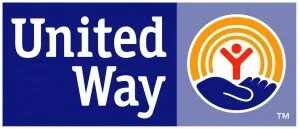State Needs a Plan to Curb Suicides
Imagine coming home to discover that your child, perhaps a 12-year-old daughter or a 16-year-old son, has taken their own life. I can’t imagine such an experience. But too many parents in communities across South Dakota have experienced this tragedy. Many priests and ministers serving in our communities agonize over the number of funerals resulting from suicide.
While it is true that Native American suicide rates in South Dakota are twice as high as the suicide rate for white South Dakotans, it is important to remember that almost 80 percent of all suicide deaths in South Dakota are white. The reality is that South Dakota’s children and young adults (under age 24) of all races end their lives at double the rate of youth nationwide.
Over the past 25 years, annual suicide numbers have doubled in this state and in the past five years, suicide has reached epidemic levels in South Dakota. Final numbers for 2017 have not been released, but the South Dakota Department of Health says it will exceed 173 suicides, a record high set in 2015. Rural areas suffer significantly higher suicide rates than urban areas, both nationwide and in South Dakota. Research indicates our farmers and ranchers have the highest rate of suicide of any profession.
While the loss of life at any age is tragic, it is especially so for youth. The losses caused by suicide go beyond actual deaths. For every suicide death, approximately six people will be severely impacted. These “survivors” often experience complicated grief and recovery which impact their productivity in school or the workplace. Statistically, for every successful suicide, there are approximately 25 attempts. Many attempts result in permanent loss of health, medical costs and lost productivity in school or employment. While these economic factors may seem insignificant compared to the loss of life and grief borne by survivors, they do suggest that investing in prevention and treatment programs will relieve significant social costs.
We know that addiction and mental illness are contributing factors to suicide among all races and in all communities. For too long, we have relied upon the criminal justice system to deal with the behavioral challenges caused by addiction and mental illness. Ultimately, jails and courts are not equipped to handle the underlying issues associated with mental illness and addiction. This type of intervention is not a “treatment” program and is the most expensive response and the least effective.
Wouldn’t a more effective solution be to redirect some of our criminal justice and law enforcement resources into alternative treatment services, instead of prosecuting those with mental illness? Too often, access to basic mental health services is lacking in places most impacted by this suicide epidemic, our rural areas.
More funding for prevention efforts is needed to combat the root cause and help deter this problem among our youth. Prevention programs that target reservation schools and communities should be given funding priority over lower risk communities.
As parents, pastors, schools, service providers and political leaders, we all have role to play in addressing this epidemic and finding solutions. In the words of Sitting Bull of the Oglala Sioux, “Let us put our minds together and see what life we can make for our children.”
We must engage our elected officials, asking, “What is the State’s suicide prevention plan?” Fighting epidemics should be a priority and behavior health losses are no exception. This epidemic that has our children taking their own lives is unacceptable.





